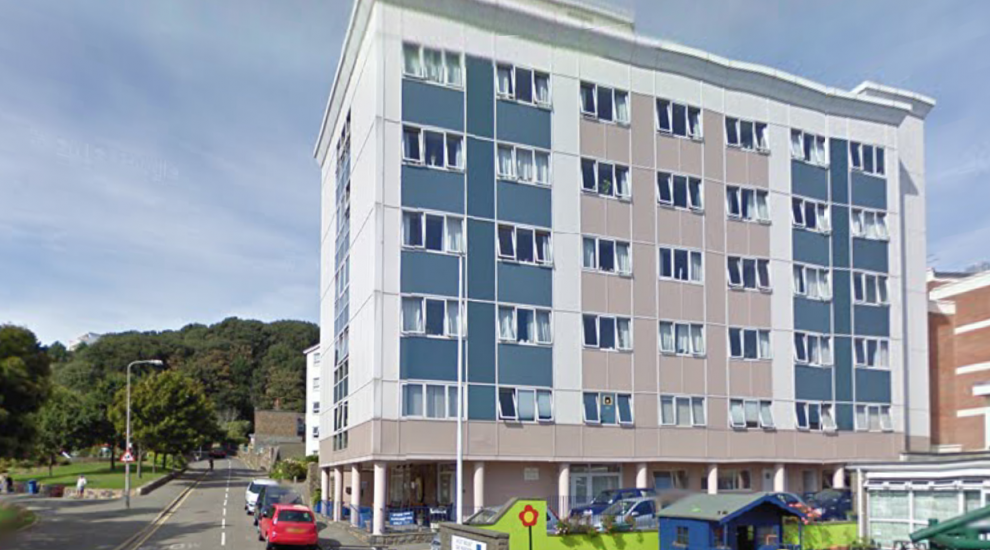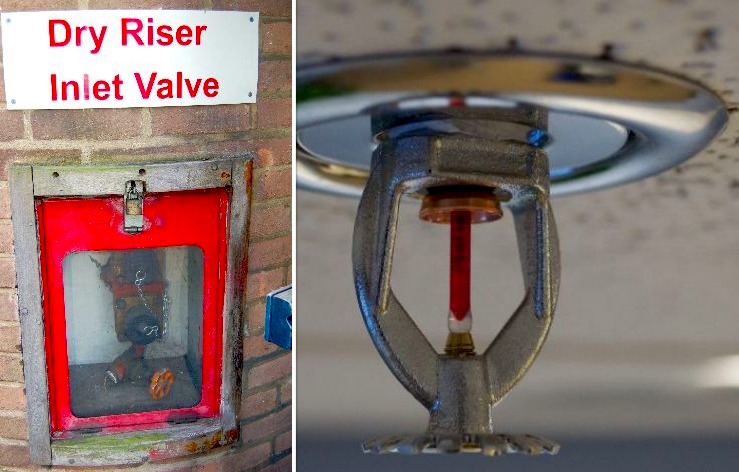

An elderly people's residential home, which is due to be closed after a series of fire safety issues emerged, would not have been allowed to be built by today's standards, the Deputy Fire Chief has said.
44 residents of St Helier House will have to be rehoused after it was discovered that the building's cladding was combustible.
Officials also expressed concerns over the building's lack of sprinklers and 'dry riser' pipes which help firefighters to deal with blazes in high-rise buildings.
The Westmount-based home was constructed in 1963, but Deputy Fire Chief Paul Brown explained that it would have been turned down by Planning officials had an application been submitted just three years later when the type of insulation present in the cladding was banned by the government. Moreover, laws introduced 50 years later in 2013 made the inclusion of sprinklers compulsory in all newly-built residential care homes.
Describing the timing of the construction as “bad luck”, he told Express: “Grenfell has shone a spotlight on the whole issue of cladding and the systems in place, but the cladding installed on St Helier House predates the current building bye-laws and codes enforced by the Department of the Environment… It is no one’s fault. It is an issue of progression - it’s just the way things change.”
Pictured: 44 residents will have to be moved from the Westmount-based residential home. (Google Maps)
All residential care homes are required to have a fire certificate, and are subject to yearly checks by fire safety officials. Despite the safety hazards identified, Mr Brown pointed out that the Parish had always complied with the conditions of their existing fire certificate and that they “couldn’t have known” about the five-floor building's cladding issue.
It had only come to light, he explained, in the wake of the Grenfell Tower tragedy in which more than 80 people died. “The morning of the Grenfell Rower fire, within hours we had commenced an assessment programme and we were looking at initially the same type or class or category of building, so we were looking at residential highrise buildings,” Mr Brown commented.
After that, fire officials progressed through the Education Department’s portfolio, advising building managers and caretakers along the way, before turning their attention to the island’s care establishments. Mr Brown said that the Parish of St Helier had independently started their own inspections, and that both parties had reached the same conclusion to eventually close the building so that it could be brought up to modern safety standards. In all of their inspections, he said that this had been the first to contain cladding that had presented a concern.

Pictured: St Helier House Care Home did not have dry risers or sprinklers, which modern building bye-laws would have required it to contain.
The Grenfell disaster had also seen questions emerge in the States about the subject of retrofitting sprinklers into aging Public buildings, but the Housing Minister explained that there were arguments "both for and against."
But Mr Brown said that the Fire and Rescue Service was highly supportive of the idea.
“We think sprinklers are an excellent idea, and we are not aware, and our colleagues internationally and in the uk are not aware, of anyone who has died in a fire with a working sprinkler system. They are really an excellent addition so we are constantly pushing the case for sprinklers.
“Under the fire and precautions law it is possible for the fire and rescue service to insist on any number of provisions including sprinklers anywhere that has a fire certificate, but again we do risk assessments and we accept that telling everybody immediately to put sprinklers in is not necessarily a realistic thing so we recognise that’s something that we have to build on.”

Pictured: Fire and Rescue Service officials knocked on the doors of more than 500 social housing residents in the wake of the Grenfell Tower disaster (inset) to provide reassurance and safety guidance.
He explained that this could be particularly difficult in listed buildings with traditional architecture: “Jersey has many old buildings which have fantastic architectural features. It is a combination of the age of the building and the use to which it is being put and its size and height. And when you put those three things together it just means that over time it becomes harder to create a modern standard in and old building when you’re putting it to that use. That’s just a feature of it - it’s no one’s fault.”
Due to the age of the building, Mr Brown added that bringing St Helier House up to date would be “a challenge”: “you’re trying to put 2017 safety standards into a 1963 building and as the building gets older, that will just make it harder and more expensive to do.”
Before such work can begin, however, residents will have to be rehomed, which the Parish said will not happen immediately. In the interim, a number of precautions have been put in place, including the placement of a trained fire marshall who will remain on patrol throughout the night.
Comments
Comments on this story express the views of the commentator only, not Bailiwick Publishing. We are unable to guarantee the accuracy of any of those comments.